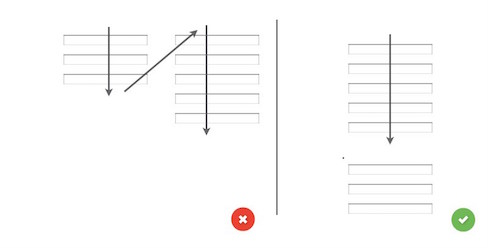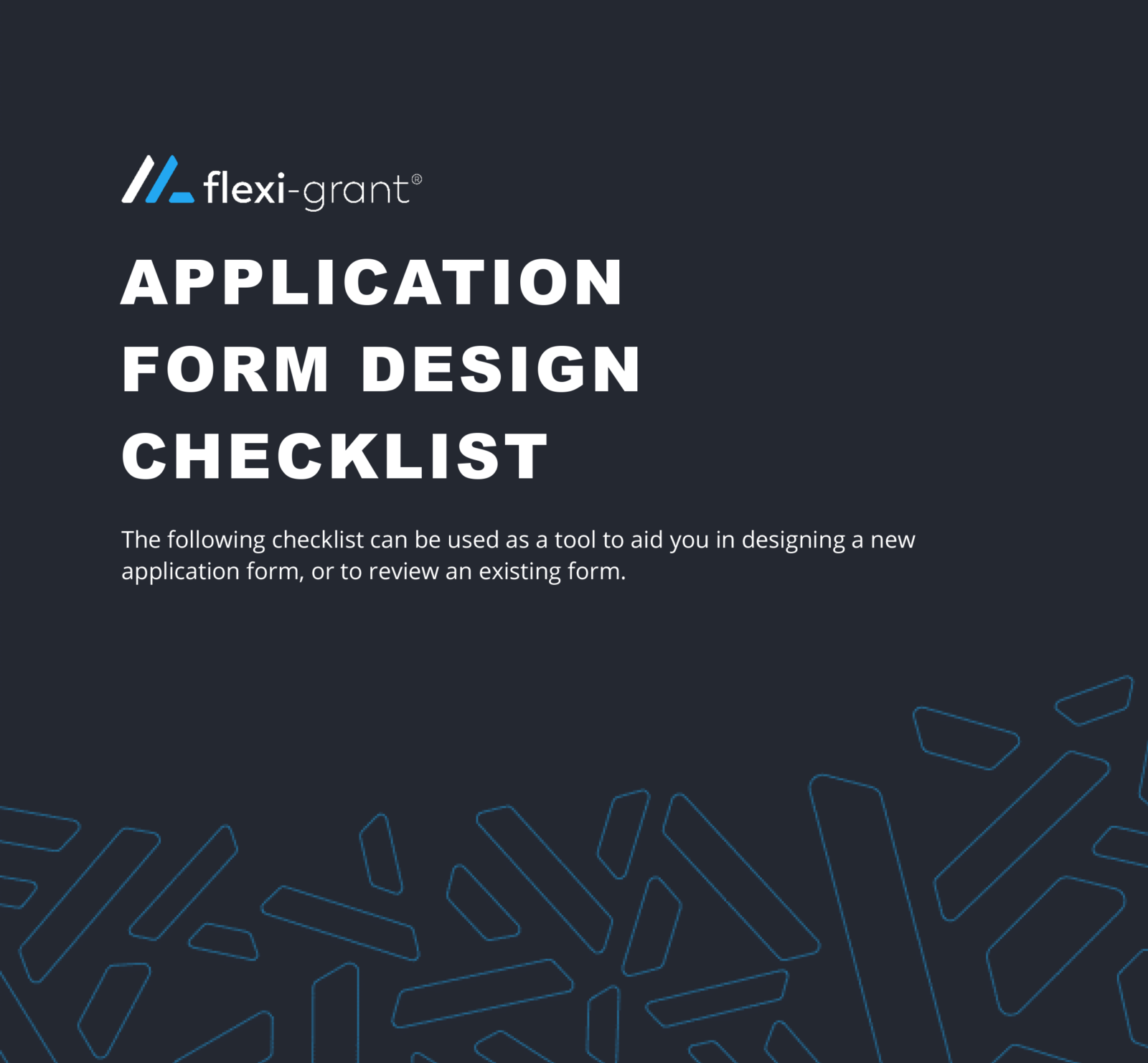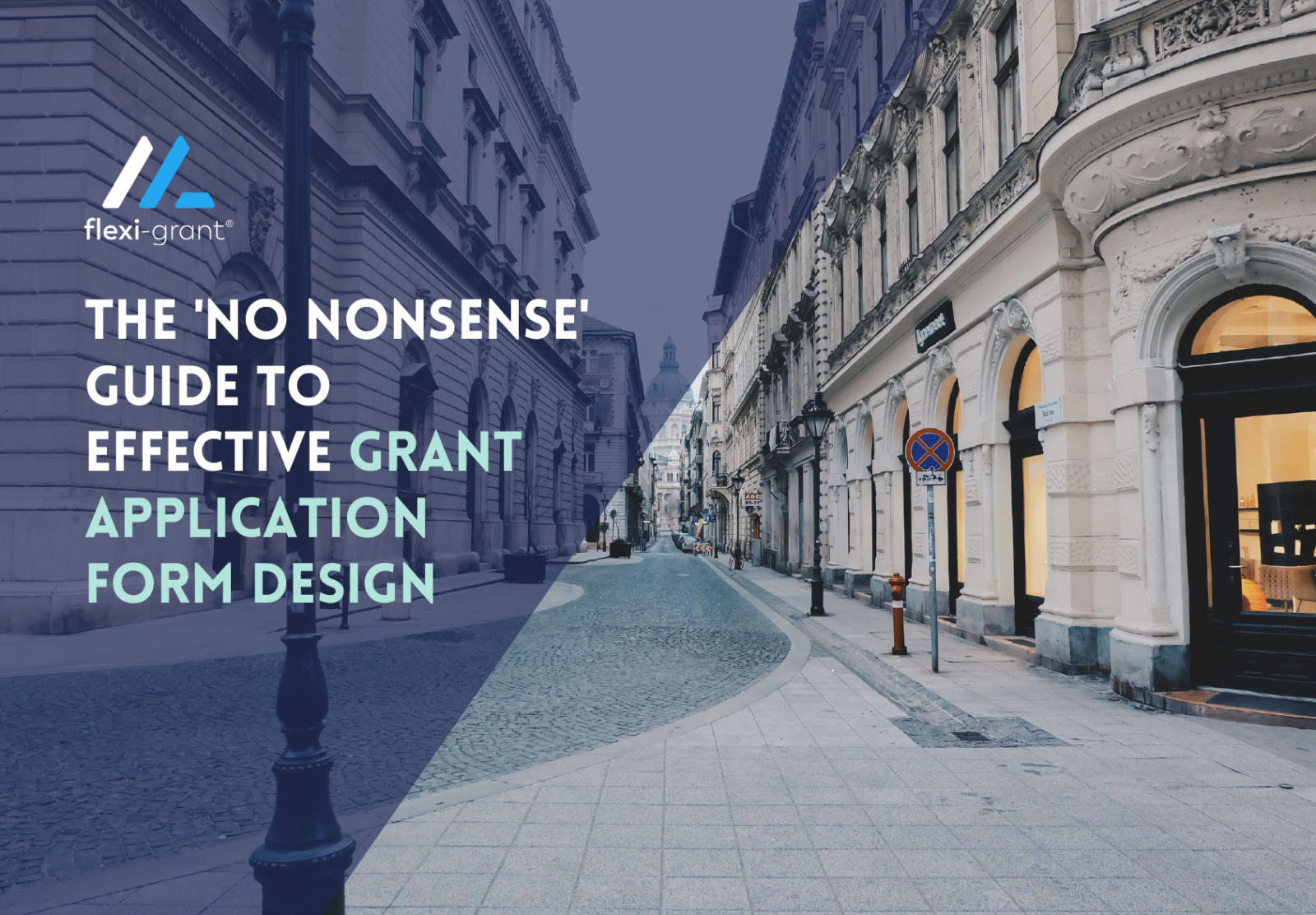What thought springs to mind when you are confronted with the prospect of designing a new application form for a brand-new grant funding scheme? Does your mind run wild with excitement and wonderment at the untapped possibility of designing the form to beat all forms, that will truly enhance and streamline the applicant experience? Or, are you filled with a sense of dread, not knowing were to begin, staring deeply into the blank page before your eyes, hoping that the words will magically appear? Or, worse yet, are a lack of experience and time constraints forcing you to reproduce forms other funders have published in the past? All too often we see a lack of imagination when it comes to application form design and the same mistakes being repeated time and again. Grant application design doesn’t have to be complicated. We know you can do better and we want to help you. With that in mind, we’ve outlined 5 key principles to designing effective application forms that grant funders of all sizes can start using – today!
Table of Content
- What is the Purpose of an Application Form Anyway?
- Modernising Grant Application Forms
- Application Form Structure
- Language in Grant Application Forms
- Application Form Accessibility
- Proportionality in Form Design
- Grant Application Transparency
What is the Purpose of an Application Form Anyway?
Our take is that an application form should simply be used as a vehicle to allow for a transaction to take place. For example, as an applicant, I provide a funder with some information about who I am, my idea to make a difference in the world, and the support network I have in place to deliver upon my idea. This form is then submitted in the hope that in return, once assessed, I obtain a financial reward to realise my ambition. It’s quite simple really, and regardless of the complexity of the project, the application form should never be overcomplicated.
Modernising Grant Application Forms
As a provider of grant management software, we are presented with application forms in all shapes and sizes, some good and some not so good. We have pretty much seen most types of application form. Let’s just say nothing surprises us anymore. We are firm believers in taking a modern approach to grant making, and support initiatives such as #FixtheForm and the Funders Collaborative Hub, which are making valiant efforts towards changing and modernising the way grant making is conducted across the sector. Rejecting the status quo and adopting this new and improved grant making methodology isn’t just a ‘nice to have’ – it is proven to reduce the administrative burden on applicants and foundations, in turn enabling greater access to grants for the projects that matter. It is with this same spirit and passion that we enter into a project to implement Flexi-Grant® for a new client. It goes without saying that the Application Form is the essential cog in the grant management lifecycle, without it, everything that follows ceases to exist. We recognise the importance of getting it right, and have invested considerable effort to help our clients transform how they design their forms. Simply reproducing your existing paper-based version of your application inside our product, doesn’t wash with us, we go the extra mile to do much more than that. If permitted, we tear it up, start afresh, and take a modern design approach – with simplicity at the core. Of course, we don’t get our way all of the time when working with clients, but we try, and work in partnership with clients to introduce the key principles of effective form design and help them push it as far as is possible. Given the vast experience we have on this particular subject matter, we didn’t want to hoard all of the principles of form building to ourselves, and very much wanted to share a number of key basic principles with you. We hope you feel inspired to take a different and more considered approach when you are next tasked with building a new grant scheme application form. In no particular order, we recommend the following key principles:
Application Form Structure
When designing your form, put your target audience front and centre. Think of the population(s) you are most interested in attracting, and appeal to them. Put simply, make it worth their while applying to you.
- Don’t over complicate your form, it should have a well-defined easy to follow structure with a chronological flow, with similar questions grouped together, that is easy for an applicant to complete.
- Questions should be clearly labelled and appropriate guidance and context provided to describe explicitly the information that is being sought.
- Avoid the use of questions, that are placed horizontally adjacent to each other which requires the user to scan in the information in a Z pattern. This increases cognitive load, and interrupts the path to completion. Design your form in a single column, so that the path to completion is a straight line down the page.

- Often overlooked, ensure that your form is designed to allow you to export useful information that is required by your organisation for reporting purposes.
Language in Grant Application Forms
How often have you heard feedback from an applicant who was put off from applying due to the language used in an application form? By language we mean the use of words or phrases that are not inclusive or equitable, that serve as barriers to underrepresented groups. No one stands to benefit in this case. It excludes applicants who you want to attract and makes your organisation look archaic at best.
- Use simple plain language that is unambiguous, clear and consistent throughout.
- Ensure the language you use is inclusive, remaining neutral, unbiased and accessible to your audience.
- Avoid the use of jargon and acronyms. Don’t assume that applicants speak the funders language.
- Tailor the language for your target audience.
Application Form Accessibility
It is a requirement for all online platforms, including application forms to comply with the Web Content Accessibility Guidelines (WCAG 2.0). Why do they matter? According to the World Health Organisation, 15% (>1 billion) of the world’s population has a recognised disability. It is without question that individuals with a disability will very likely complete your application form. So, have you designed your form with these individuals in mind? Were you even aware that individuals with disabilities access web-based content using different kinds of assistive tools to do so? For example, a blind person may use a screen reader, a partially sighted person may use a magnifier, captions are used by those whose hearing is impaired, and switch access used by those with motor disabilities.
- It is important that the structure and design of your application form is simple, to allow for assistive tools to navigate easily through each section.
- Refrain from using positional language, such as above and below when referring to additional information. Screen readers do not understand such phrases.
- Likewise, use full words and not symbols, such as plus as opposed to +, unless there is no alternative. Their use is lost in translation, which does not empower the applicant to provide as strong a response to the question.
Proportionality in Form Design
Have you heard the one about the 72-page application form for the princely sum of $5000? I’m afraid so, your eyes are not deceiving you. This is the sort of bad practice we read about far too often. An extreme example perhaps, but you get the point. Is it absolutely necessary to request this level of information for such an insignificant sum? It smacks of a power and privilege imbalance, where you find yourself jumping through those hoops due to sheer desperation. It leaves a sour taste in the mouth to think that grant giving of this kind exists. Lets all be better, by simply doing better.
- Ensure that the length of your application form is relative to the value of the grant award being offered – the effort should be worth the reward.
- Only ask for information that is absolutely necessary to assess the quality of the application. – If you ain’t going to use it, don’t ask for it!
Transparency
Transparency can be achieved in a variety of different guises. Above all though, don’t make it difficult for an applicant to find the relevant information that they need to prepare a submission to you. Applicants are very often working on several applications at a time, with competing deadlines, and inevitably with processes that embody a variation on a theme. Give a little, empathise, and ensure the information you provide is clear and easy to obtain – there are no state secrets at risk here.
- Consider publishing your application form and making it downloadable well ahead of time, so an applicant can plan in advance and make an informed decision as to whether or not they should even contemplate applying to you.
- Provide an outline of the post-submission process, include the steps involved in assessing the application, and the timeframes for decisions to be made.
- Ensure that supplemental guidance documentation is easy to obtain, and has been designed using the same principles as previously described.
- Define what levels of support are available to applicants during the application process, clearly define the boundaries so expectations are managed.
- If you are not prepared to provide feedback to unsuccessful applicants, say so in your promotional material, not after they have gone to the length of submitting an application – put yourself in their shoes.
- Be flexible and empathetic with those individuals who may have special needs or exceptional circumstances that require some additional time or support to complete and submit an application form.
Are You up for the Challenge?
Sadly, the act of grant making / giving has become a bit too corporate, with the very act itself often governed to within an inch of its life. So much so, for many applicants, it has got to the point where the very thought of completing another obscenity of an application form can often be soul destroying. Funders have a duty of care and responsibility to make funding readily available to those most in need, and to do so with ease, so that the impact can be realised almost immediately, not several months after the applicants passion has fizzled out. However, massively ineffective form design is holding back grant giving organisations from doing just that – giving grants. Perhaps key stakeholders should be required to complete their own organisation’s forms and provide feedback on the experience before expecting unsuspecting applicants to navigate badly designed forms with a never-ending torrent of questions themselves. With that in mind, we challenge you to be bold, be a pioneer, tear up the rule book – (who wrote it anyway?) – and put the needs of those you aim to serve ahead of your funders, and start by making simpler equitable application forms. You might just surprise yourself along the way.
About Flexi-Grant®
Flexi-Grant® is a leading cloud-based grant management platform designed for those funding life changing grants to both individuals and organisations. Its powerful features give grant givers the ability to build, score, review, report, and budget all in a secure and accessible platform.
Our team are a mix of grant managers, cybersecurity experts and hardcore engineers with a passion for sustainable software; get in touch now to find out more about Flexi-Grant’s truly cloud-based Grant Management platform.

Application Form Design Checklist
The following checklist can be used as a tool to aid you in designing a new application form, or to review an existing form.

